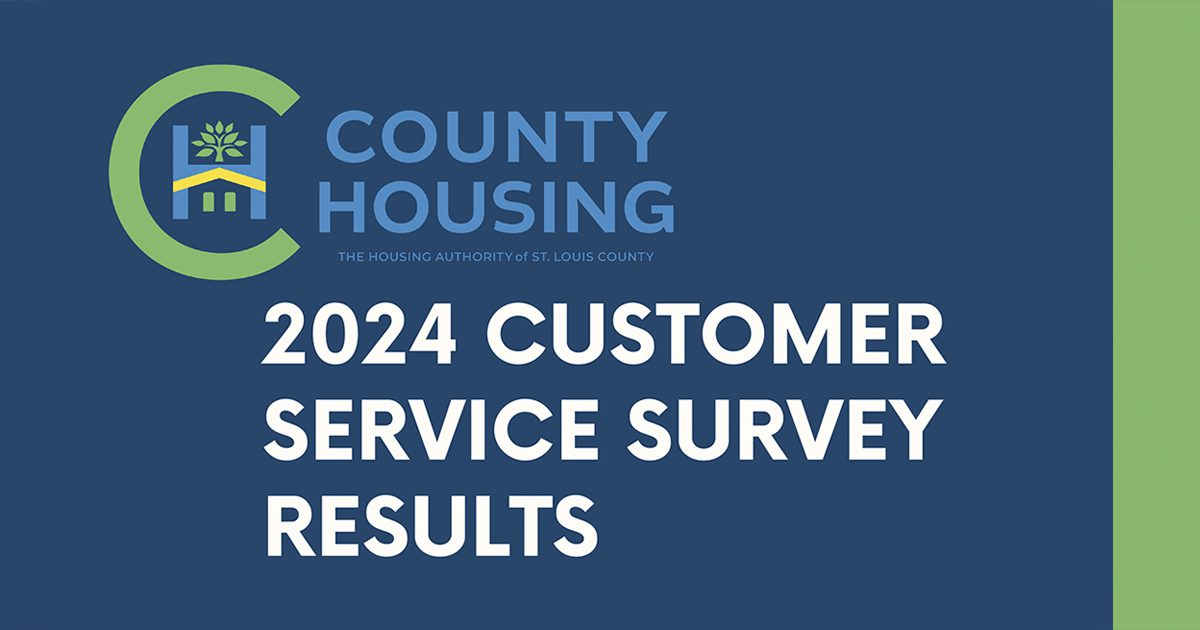Our 2024 Annual Report is here! This year’s report highlights County Housing’s continued commitment to providing safe, affordable housing and strengthening our community partnerships.
Thank you for your support in making a difference!


At County Housing, we value the input of our residents, Housing Choice Voucher (HCV) participants, and property owners. Each year, our annual customer service survey helps us gauge satisfaction, identify areas for improvement, and celebrate successes. In November 2024, we conducted our latest survey, focusing on key interactions with customer-facing roles and processes. Here are the highlights and insights from this year’s results.
We are pleased to report an increase in overall participation compared to last year, particularly among Housing Choice Voucher residents.
| Survey Group | Surveys Sent (2024) | Responses (2024) | Response Rate (2024) | Response Rate (2023) |
|---|---|---|---|---|
| Public Housing Residents | 279 | 45 | 16% | 14% |
| Housing Choice Voucher Residents | 977 | 290 | 30% | 20% |
| Property Owners | 940 | 219 | 23% | 28% |
Public Housing residents provided valuable feedback on their interactions with property management and maintenance staff. Notable improvements included:
77% satisfaction with how property management staff treated and spoke to residents, up from 53% in 2023.
84% satisfaction with notifications regarding annual income recertifications, up from 53% in 2023.
64% satisfaction with staff’s timeliness in returning calls, a significant increase from 25% in 2023.
However, satisfaction with maintenance staff saw mixed results. While satisfaction with communication regarding maintenance increased to 47% from 39%, satisfaction with the overall quality of repairs remains an area of focus at 44%.
HCV residents reported improvements in several areas:
74% satisfaction with how they were treated and spoken to by staff, up from 61% in 2023.
70% satisfaction with inspection staff, up from 45% in 2023.
53% satisfaction with staff’s timeliness in returning calls, an increase from 45% in 2023.
Open-ended responses highlighted the need for enhanced communication, timely notifications, and better accessibility to caseworkers.
Property owners and landlords also shared positive feedback:
73% would recommend the Housing Choice Voucher program to other landlords, up from 47% in 2023.
70% were satisfied with the requirements for biannual property inspections, up from 62% in 2023.
65% reported positive experiences leasing to County Housing residents, up from 48% in 2023.
Landlords praised County Housing for being straightforward and effective, with one respondent saying, “The overall program is great and wonderful for both tenants and landlords. I enjoy serving the housing need and look forward to supplying more housing.”
Feedback from all groups emphasized the importance of improving communication, including timely responses to inquiries, clear notifications, and better updates on case statuses. Maintenance quality and accessibility to services were also recurring themes among Public Housing residents.
We deeply appreciate the time and effort our residents and property owners dedicated to providing feedback. These insights guide our mission to deliver exceptional service and foster trust among those we serve.
As we head into 2025, County Housing remains committed to:
Thank you for your trust and partnership. Together, we’re building a stronger, more responsive County Housing community.